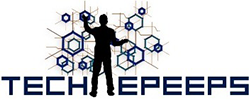The US Cybersecurity and Infrastructure Safety Company (CISA) has given organizations a brand new useful resource for analyzing suspicious and probably malicious information, URLs, and IP addresses by making its Malware Subsequent-Gen Evaluation platform obtainable to everybody earlier this week.
The query now could be how organizations and safety researchers will use the platform and how much new risk intelligence it’ll allow past what is on the market by way of VirusTotal and different malware evaluation providers.
The Malware Subsequent-Gen platform makes use of dynamic and static evaluation instruments to investigate submitted samples and decide if they’re malicious. It offers organizations a approach to receive well timed and actionable info on new malware samples, such because the performance and actions a string of code can execute on a sufferer system, CISA mentioned. Such intelligence could be essential to enterprise safety groups for risk looking and incident response functions, the company famous.
“Our new automated system permits CISA’s cybersecurity risk looking analysts to higher analyze, correlate, enrich information, and share cyber risk insights with companions,” mentioned Eric Goldstein, CISA’s government assistant director for cybersecurity, in a ready assertion. “It facilitates and helps fast and efficient response to evolving cyber threats, finally safeguarding crucial methods and infrastructure.”
Since CISA rolled out the platform final October, some 400 registered customers from numerous US federal, state, native, tribal, and territorial authorities companies have submitted samples for evaluation to Malware Subsequent-Gen. Of the greater than 1,600 information that customers have submitted to this point, CISA recognized about 200 as suspicious information or URLs.
With CISA’s transfer this week to make the platform obtainable to everybody, any group, safety researcher, or particular person can submit malicious information and different artifacts for evaluation and reporting. CISA will present evaluation solely to registered customers on the platform.
Jason Soroko, senior vice chairman of product at certificates lifecycle administration vendor Sectigo, says the promise of CISA’s Malware Subsequent-Era Evaluation platform lies within the perception it will probably probably present. “Different methods consider answering the query ‘has this been seen earlier than and is it malicious’,” he notes. “CISA’s method would possibly find yourself being prioritized otherwise to grow to be ‘is that this pattern malicious, what does it do, and has this been seen earlier than’.”
Malware Evaluation Platform
A number of platforms — VirusTotal is essentially the most broadly recognized — are presently obtainable that use a number of antivirus scanners and static and dynamic evaluation instruments to investigate information and URLs for malware and different malicious content material. Such platforms function a kind of centralized useful resource for recognized malware samples and related habits that safety researchers and groups can use to establish and assess threat related to new malware.
How completely different CISA’s Malware Subsequent-Gen might be from these choices stays unknown.
“Presently, the US authorities has not detailed what makes this completely different from different open supply sandbox evaluation choices which can be obtainable,” Soroko says. The entry that registered customers will get to evaluation of malware focused at US authorities companies might be useful, he says. “Having access to CISA’s in-depth evaluation can be the explanation to take part. It stays to be seen for these of us exterior of the US authorities if that is higher or the identical as different open supply sandbox evaluation environments.”
Making a Distinction
Callie Guenther, senior supervisor, cyber risk analysis at Essential Begin, says it is attainable that some organizations would possibly initially be a bit cautious about contributing samples and different artifacts to a government-run platform due to information confidentiality and compliance points. However the potential upside from a risk intelligence standpoint may encourage participation, Guenther notes. “The choice to share with CISA will doubtless contemplate the steadiness between enhancing collective safety and safeguarding delicate info.”
CISA can differentiate its platform and ship extra worth by investing in capabilities that allow it to detect sandbox-evading malware samples, says Saumitra Das, vice chairman of engineering at Qualys. “CISA ought to attempt to put money into each AI-based classification of malware samples in addition to tamper-resistant dynamic evaluation strategies … that would higher uncover [indicators of compromise],” he says.
A bigger give attention to malware focusing on Linux methods would even be a giant enchancment, Das says. “Plenty of the present focus is on Home windows samples from EDR use circumstances however with [Kubernetes] and cloud-native migration occurring, Linux malware is on the rise and are fairly completely different of their construction,” from Home windows malware, he says.





_dennizn_alamy_2.jpg?disable=upscale&width=1200&height=630&fit=crop&w=350&resize=350,250&ssl=1)














